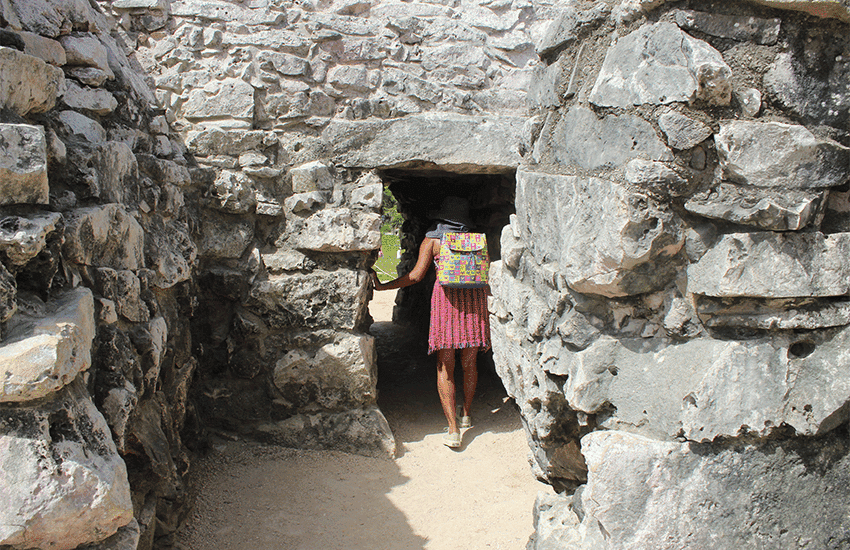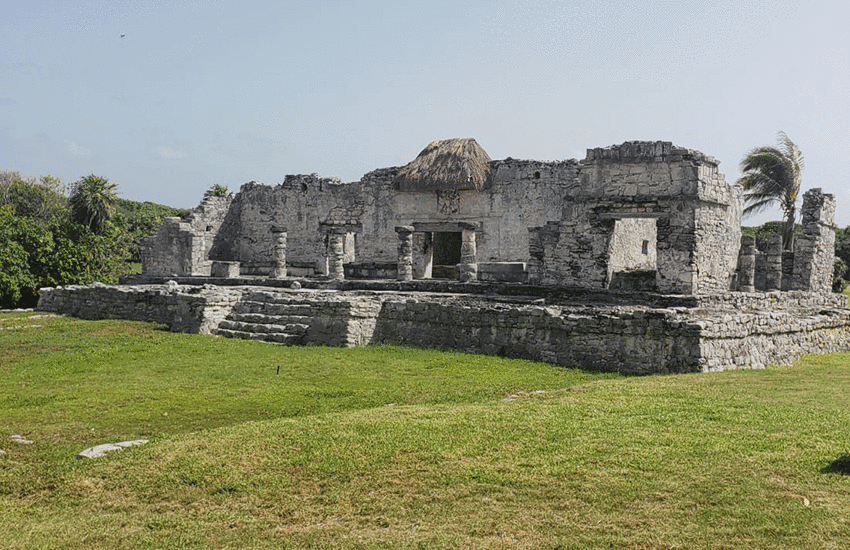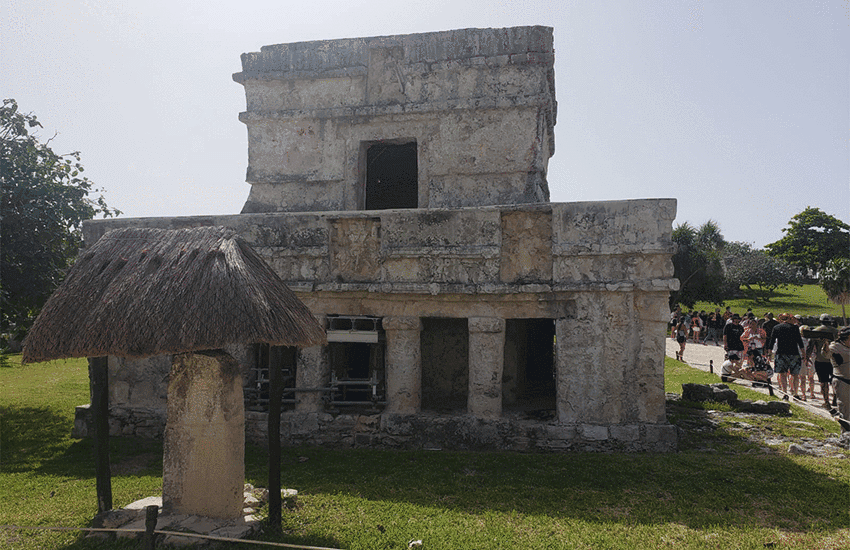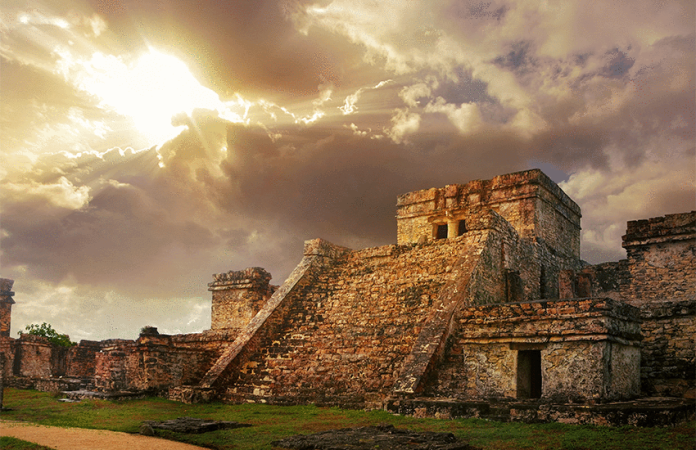The ancient Maya city of Tulum, with glorious ocean views, was an important trading port in the commercial route from central Mexico to Honduras. The site, around 130 kilometers from Cancún, south of Playa del Carmen via Federal Highway 307, is close to the archaeological zone of Cobá.
The name Tulum is Mayan for wall or palisade. It’s believed to refer to the ruins’ surrounding wall. The National Institute of Anthropology and History (INAH) says 16th-century sources call the site Zamá, Mayan for morning or dawn.
Located on a cliff, the city may have been first noticed by the Spanish conqueror Juan de Grijalva in 1518 as he was sailing from Cuba to Mexico. Juan Díaz, a chaplain and chronicler of the expedition, wrote that he had seen a city “as big as Seville,” which may have been Tulum, according to INAH.
Explorers John Stephens and Frederick Catherwood famously visited the site in the early 1840s. During the Caste War of Yucatán (1847–1901), a revolt by the native Maya on the Yucatán Peninsula against the resident Hispanic white and mestizo populations, Tulum was part of the area under rebel control.
Tulum also became a key center of the Maya insurgent religious phenomenon known as the Cult of the Talking Crosses — which involved various miraculous incidents over several years said to have taken place during the Caste War.

According to believers, various divine crosses said to have spoken to the Maya rebels in their native tongue appeared in different rebel locations at different times during the war, providing the Maya encouragement to persevere in their insurgency. The cross in Tulum was said to have appeared in the 1860s.
The buildings at the Tulum site date from A.D. 1250–1550, but features from former periods were also discovered there, including a stela dating to A.D. 564. Therefore, INAH says that the city may have been formed earlier, perhaps as a dependent territory of the nearby Tankah ruin.
Tulum is thought to have been dedicated to Venus. Some building facades have figures of a descending god depicted upside down, who is associated with the sunset and considered connected to the planet. The entrances to structures with descending god figures are said to face the direction where Venus sets.
The Maya of Tulum are thought to have relied mostly on the ocean for food, as well as for material to make different tools and objects. Other supplies were sourced from the jungle. Also, the houses are believed to have had small gardens providing homegrown fresh produce.
The site is surrounded by a wall from the north, south and west, while it borders the ocean to the east. The wall has five entrances and two watchtowers to the north and south.
These watchtowers are also temples, each with an altar inside. Climbing the buildings is not allowed.

Northeast of the site is the three-room House of the Cenote, built over one of the area’s many water-filled caves. A tomb was discovered in this building. To the east is the Kukulcán Group of buildings. Situated by the sea, to the northeast of this section, is the Temple of the Wind God — a square temple on a round base.
The most important section of the Kukulcán Group is the Indoor Enclosure. With 12 buildings, including temples and shrines, it was separated from the other buildings by a low wall. The most important and tallest building of the site, the three-level temple called El Castillo (the Castle), is located here.
The Castle is sometimes speculated to have been a lighthouse. The ground level has two small temples on either side of the wide stairway and altars inside, but the important religious ceremonies took place in the upper temple.
The two columns on the upper temple’s facade are serpent-shaped. The descending god is depicted on this facade, and in the corners are remains of stucco masks of animal forms.
To the north of the Indoor Enclosure is a beautiful single-room structure on a platform called the Temple of the Descending God. It features a figure of the descending god above the entrance. This temple was decorated with mural paintings.
The Temple of the Initial Series within the enclosure is worth seeing. There is an altar inside, and a stela from A.D. 564 was discovered here. The facade has a stucco relief and the remains of a sculpture of a seated human figure.

The Central Group buildings are also interesting. A must-see in this section is the two-level Temple of the Frescoes.
The ground level has two temples – one inside another. The inner temple’s facade has mural paintings of gods, but unfortunately, you can’t enter to see them.
The outer temple’s facade has stucco reliefs that contain sculptures — including ones of the descending god — and masks in the corners. The upper temple has red handprints, considered decorative.
To the north, you’ll find the House of Columns, a palace on an L-shaped platform with several rooms. Further north within the Central Group is also the Palace of the Great Lord, called Casa del Halach Uinic. This was where the ruler – called the halach uinic – and his family lived.
The inside of this building is said to have a figure of the descending god as well. The benches along the walls are considered seats but may have also been beds. To the rear of the building is a section where the family living here carried out religious ceremonies.
The Chultún House, close to the west entrance and with an altar inside, is also worth seeing. The building is named after an underground water-storage cavity, called a chultún in the Mayan language.
There are other structures to see on the site. The mini buildings are called Miniature Temples, speculated to have been altars due to their size. Or you can envision the activities of the ancient trading port from the lookouts on the site in addition to enjoying the spectacular views across the ocean.
For a refreshing swim in the Caribbean Sea after exploring the ruins, take the stairs by the cliff to the beach.
Thilini Wijesinhe, a financial professional turned writer and entrepreneur, moved to Mexico in 2019 from Australia. She writes from Mérida, Yucatán. Her website can be found at https://momentsing.com/
